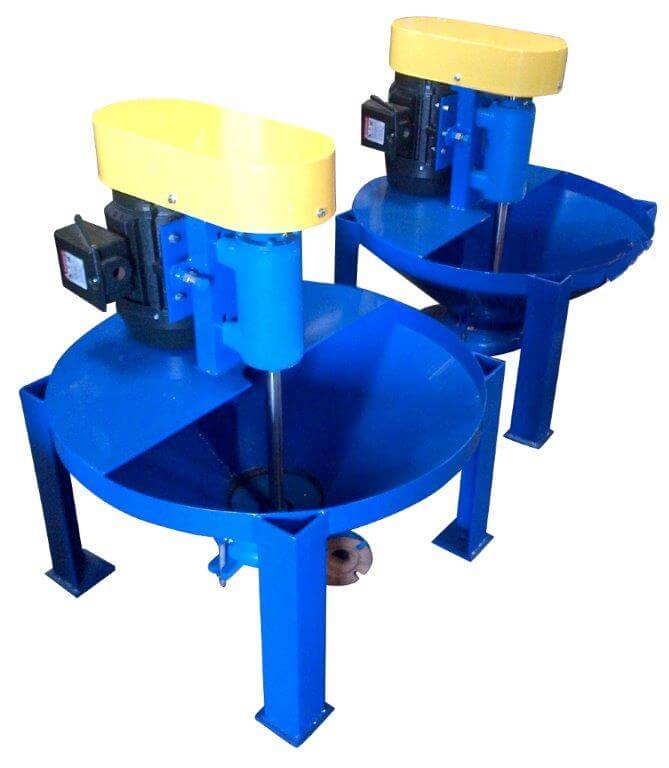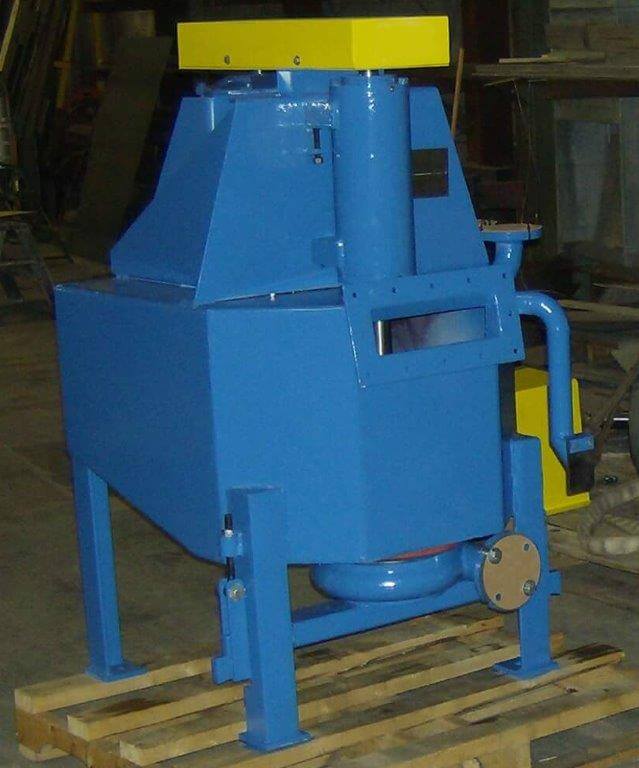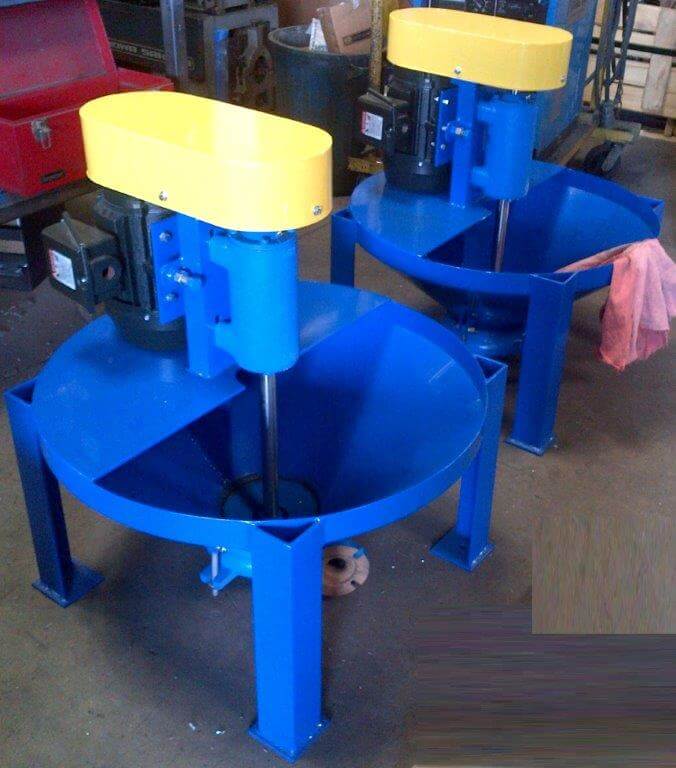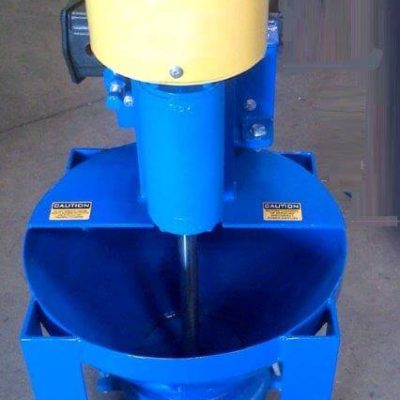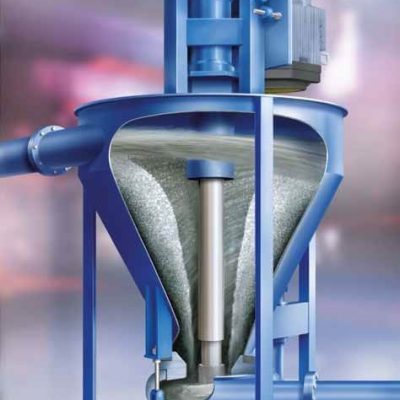CONTENTS
A) Installation
B) Drives
C) Start-up
D) Maintenance Procedures
E) Lubrication
F) Storage Instructions
G) Spare Parts Orders
INSTALLATION
These units require no special foundation preparations and are normally secured with ordinary anchor bolts to the existing floor. Often the small units are kept portable and mounted on skids.
It is recommended that a length of flexible rubber hose be used on pump discharge. This simplifies alignment procedure and pump inspection. If rigid discharge piping is used, caution should be exercised so as not to apply external stresses to the pump discharge from misalignment, lack of support or vibration. Pump feed into the tank should be directed so as to oppose the normal vortex created about the shaft thus ensuring that a minimum of air enters the pump.
DRIVES
The Titan Vertical Tank Pump is normally belt driven. This allows maximum flexibility in selecting the most efficient pump speed for a given application. Pumps are equipped with a swing type adjustable motor plate.
After installing motor and sheaves, check motor direction before mounting belts. When viewed from the top (shaft end) pump should rotate in a clockwise direction. Belt tension is adjusted with motor plate adjusting screws.
START-UP
New units are supplied pre-adjusted, lubricated and ready for service. Once installed and operating any problems should be reported as soon as possible. Units are pre-tested to conditions as close as possible to those given to us for sizing (when applicable). If the unit does not perform as required, continued running could result in unnecessary damage.
Once flows have been stabilized the pump tank should retain a running level of 1/3 to ½ full in order to take full advantage of the available suction head to provide smooth stable running. Units can be run with little or no liquid in the tank since the large inlet opening prevents air from blocking the impeller. In the case of Ni-hard wear parts, the pump can be run dry or nearly dry for extended periods without any evidence of abnormal wear. In the case of rubber lined wear parts however it is recommended that the pump not run dry for more than 10-15 minutes. Since running the pump for longer periods of time could cause the temperature of the trapped slurry to exceed 70 degrees C. Thereby causing softening of the rubber and producing erratic and unpredictable wear life.
MAINTENANCE PROCEDURES
Pump construction is very simple and requires little explanation. The following procedures are supplied as a guide to ensure proper wear parts removal, adjustment and or assembly.
1- Wear Part Removal
Pump size 1 ½”:
- Drain the unit
- Release the discharge flange connection.
- Support the casing then loosen eyebolt nuts until sufficient clearance is achieved to swing them free of the casing.
- Remove the casing.
- Remove the impeller nut and washer (remove nut by turning anti-clockwise).
- Remove the impeller by pulling.
- Remove the inlet.
Pump size 2″:
- Drain the unit.
- Release the discharge flange connection.
- Support the casing then remove the yoke (support beam wedges).
- Swing the shackles outward and lower the yoke c/w casing.
- Remove the casing from the yoke.
- Remove the impeller bolt and washer (anti-clockwise).
- Remove the impeller by pulling.
- Remove the inlet.
Exercise caution when handling wear parts especially all metal parts, as the larger sizes are heavy. Approximate weights are shown in Table 1.
2- Wear Parts Assembly and Adjustment
To re-assemble the pump, follow the instructions for dismantling the pump in reverse sequence. It is advisable to coat the shaft end with a rust preventative lubricant before mounting the impeller to ensure easy removal in the future.
If new parts are installed and or adjustment is required, follow the following steps as applicable:
- Hold the inlet in place with the retainer brackets.
- Mount the impeller (see Table 2 for tightening torques).
- Release set screw located in the lower flange on the bearing housing.
- Lower the shaft and bearing assembly by means of the adjusting bolts located on top of the bearing housing.
- Secure the impeller and adjust assembly until a small running clearance exists between the impeller and inlet.
- Mount casing on the yoke and raise in place then using the wedges to give the tightening pressure.
- Final adjustment is made by raising the shaft and bearing assembly until the impeller just touches the inlet. Then lower just enough for impeller to rotate freely.
- Tighten the set screw loosened in step 3.
- Lock the adjusting bolts with respective nuts.
NOTES: If replaceable casing rubber liner is used, be sure casing is clean before installation. Talc or soapy water usually makes installation easier. Install discharge neck first.
Make sure that all gaskets are in good conditioned, clean and properly located before re-using.
3- Bearing Replacement
Remove the wear parts and drive assembly.
Remove the seal rings and covers on the bearing housing and pull out the shaft in the opposite direction of where the radial bearing is located.
The new bearings should be heated to 80 degrees C (175 degrees F) before being fitted on the shaft.
The inner ring of the radial bearing should be installed before the spherical bearing.
When the bearings are cool, insert the shaft into the bearing housing and install the outer race of the radial bearing.
Pack the bearing with grease (see lubrication instruction) and install the covers and seal rings.
LUBRICATION
The pumps have two grease nipples for the anti-friction bearings located on the bearing housing. New pumps are supplied pre-greased with bearing grease and the first field lubrication should take place after 300 hours of operation.
If substitute grease is used, please make sure that it is chemically compatible with standard or supplied grease in order to avoid bearing damage.
When lubricating the bearings do not over-grease as this might cause over-heating of the bearings. As a guide line, use the following approximate quantity:
MDL ‘S’ ; 1 ½” 20 G (0.7 oz)
MDL ‘S’ ; 2″ 25 G (0.8 oz)
Depending on the pump speed, lubricate with the following intervals:
| Pump Speed |
Lubrication Interval |
| 1000 RPM or less
1000 – 1500
1500 – 2000
Above 2000 |
1200 hours
900 hours
600 hours
300 hours |
NOTE: If the Pumps have been stored for any length of time, it should be lubricated before start-up with two to three times the normal quantity of grease.
STORAGE INSTRUCTIONS
- Pump should be stored in a cool, dry and well ventilated location.
- Pump shafts should be rotated once every six weeks.
- Pumps should not be exposed to temperatures below -35 degrees C (-30 degrees F) for an extended period of time.
- Prior to start-up, the bearing should be lubricated – (see Item E above).
- Pumps with natural rubber, or other elastomer parts, should not be exposed to direct sunlight, temperatures in excess of degrees 40 C (110 degrees F) or an atmosphere containing chemical substances that might cause damage.
SPARE PARTS ORDERS
To ensure correct part identification and efficient order expediting, spare parts orders should contain the following information:
- Pump model (as per tag on Pump).
- Pump serial number (as per tag on Pump).
- Part number and complete description as per spare parts list and quantity of each item required.
- Required delivery time.
APPROXIMATE WEIGHT OF WEAR PARTS – LB. (KG)
| Pump Size |
Casing |
Rubber Lined Impeller |
Inlet |
| 1 ½”
2” |
15.5 (7)
30 (13.5) |
5 (2.2)
6.6 (3) |
3.5 (1)
6.6 (3) |
IMPELLER BOLT TIGHTENING TORQUE
Pump Size 1 ½ ” & 2 ”
‘S’ Ft. Lbs. 108
‘S’ Nm 147
‘S’ Nm 147


